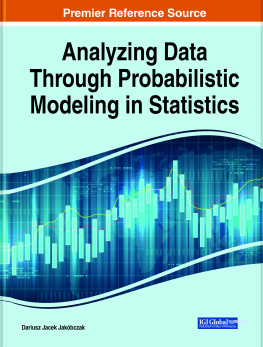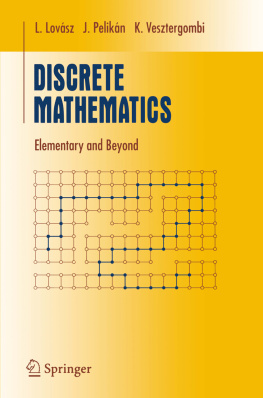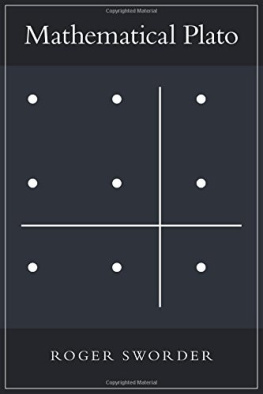A ttending university in Germany is an appealing option for many students from outside of the European Union.
The Practice Test for the TestAS Mathematics, Computer Science and Natural Sciences
Preface
A ttending university in Germany is an appealing option for many students from outside of the European Union.
Germany has countless universities, many of which are recognized on an international level for their excellence. According to the 2019 Times World University Ranking, 35 of the worlds 300 best universities are in Germany. As such, a Bachelors or Masters degree from Germany can open the door to a variety of exciting career opportunities, both within Germany and worldwide. The multitude of programs offered in English, as well as the numerous funding options for international students (e.g. ERASMUS), make studying in Germany feasible for students from abroad. Whats more, studying in Germany is also quite affordable: Since 2013, most universities have had no tuition fees for non-EU citizens.
Therefore, it is no surprise that an ever-rising number of non-EU applicants seek admission to German universities. As a result, the application pool is more competitive than ever, and German universities have raised the difficulty of their admissions criteria for non-EU applicants. But do not despair; the fact that you are reading this book suggests that you are already on track to becoming a more ambitious applicant. There are certain things applicants can do to increase their chance of admission into German university. One is taking the Test for Foreign Students (TestAS). Over the years, the benefit of preparing for and taking this exam has become clear: applicants with elevated scores are more likely to get accepted into to certain German universities.
A higher score can set you apart from other applicants, especially if you are applying to a program related to science, economics, or medicine. The TestAS is a standardized exam for high-school graduates from countries outside of the European Union who hope to study at a German university. The test is offered by the Society for Academic Study Preparation and Test Development and is optional to applicants. The TestAS aims to measure cognitive and intellectual capabilities and has been used since 2007 as an aid for the application process to German universities. The test may be taken in German, English, and, in some cases, Arabic. Competitive scores on the TestAS put applicants at an advantage when applying to certain universities.
Participating universities use TestAS scores to evaluate the academic aptitude of potential students. As such, a favorable test score can greatly increase an applicant's chances of being admitted to his/her desired university and course of study. Good scores are also indicative that a student is likely to succeed in his/ her studies. The TestAS consists of two sections: the core test and a subject module. The core test consists of four subsections and tests general cognitive skills. Every test taker completes the core test.
We offer three preparation books for the core test to help you with mastering this test section. In contrast to the core test, test takers choose which subject module to take. There are four options: Mathematics, Computer Science and Natural Sciences, Engineering, Economics or Humanities, Cultural Studies and Social Sciences. Applicants should select the subject module most relevant to the degree for which they are applying. This section aims to evaluate their aptitude within this specialized area. This book is a simulation for the TestAS.
You will find a complete practice test with information and detailed explanations for each type of question in the core test and module Mathematics, Computer Science and Natural Sciences. On our homepage www.testasprep.com you will find our books for the TestAS as an ebook in German and English, as well as lots of useful information about the exam. Our preparatory books are also available in German as printed books on Amazon. We wish you success during your preparations and on the exam ! Best regards, Your edulink team TABLE OF CONTENTS
Introduction to the practice test |

Benefits of a practice test
Dear readers, A practice test allows test-takers to experience the test format (test content as well as testing procedure) as they will on test day. This is crucial to identifying your specific test-taking weaknesses and developing effective preparation. Familiarizing yourself with the test format will help you arrive confident and well prepared for the exam.
The practice test gives you the opportunity to take the exam under real conditions. You will get to know the procedure of the exam, practice the variety of question types, experience the pressure of the time limits, and overall gain a good impression of what to expect. Through practice test you can determine how difficult it might be to concentrate for so many hours and you also get a good idea of how to pace yourself and manage time both within sections and while solving individual questions. We advise you to take the practice test in a single sessio n . Allow enough time to analyze your test results after the practice test. Doing this, you will address any gaps in your knowledge and achieve a better result on the test day.
The test questions have been carefully selected and are based on extensive research and experience. In order to best simulate the exam situation, the questions also have varying levels of difficulty. This practice test was designed to complement our series of TestAS preparation books. Our books for the Core Test as well as both books for the section Mathematics, Computer Science and Natural Sciences are available for a more comprehensive treatment of the topics covered in the exam. In these books, we give you recommendations for answer strategies for various types of questions, in-depth explanations of common test topics that have been regularly asked in previous tests, as well as many exercise questions with detailed answers. We recommend that you first prepare with the preparation books and then practice with the practice test.
We hope that the following test will give you a comprehensive overview of what knowledge is expected of you enable you to develop familiarity with the question types of the admission test. We wish you good luck!
Structure of the test
The test consists of seven subtests, that are made up by the Core Test and a subject-specific test module (Humanities, Cultural Studies and Social Sciences). The Core Test consists of four subtests:









 The Practice Test for the TestAS Mathematics, Computer Science and Natural Sciences
The Practice Test for the TestAS Mathematics, Computer Science and Natural Sciences 
